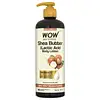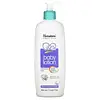What's inside
What's inside
 Key Ingredients
Key Ingredients

 Benefits
Benefits

 Concerns
Concerns

 Ingredients Side-by-side
Ingredients Side-by-side

Water
Skin ConditioningEthyl Olivate
EmollientOlive Oil Ethylhexyl Esters
Glycerin
HumectantStearic Acid
CleansingGlyceryl Stearate
EmollientCetearyl Alcohol
EmollientIsopropyl Myristate
EmollientCeteareth-22
EmulsifyingCaprylic/Capric Triglyceride
MaskingCetyl Palmitate
EmollientOlive Oil PEG-7 Esters
EmollientParfum
MaskingTriethanolamine
BufferingPhenoxyethanol
PreservativeSodium PCA
HumectantImidazolidinyl Urea
PreservativeLactic Acid
BufferingCarbomer
Emulsion StabilisingAllantoin
Skin ConditioningTheobroma Cacao Seed Butter
EmollientButyrospermum Parkii Butter
Skin ConditioningMilk
Skin ConditioningCream
EmollientBHT
AntioxidantDisodium EDTA
Mel Extract
MoisturisingWater, Ethyl Olivate, Olive Oil Ethylhexyl Esters, Glycerin, Stearic Acid, Glyceryl Stearate, Cetearyl Alcohol, Isopropyl Myristate, Ceteareth-22, Caprylic/Capric Triglyceride, Cetyl Palmitate, Olive Oil PEG-7 Esters, Parfum, Triethanolamine, Phenoxyethanol, Sodium PCA, Imidazolidinyl Urea, Lactic Acid, Carbomer, Allantoin, Theobroma Cacao Seed Butter, Butyrospermum Parkii Butter, Milk, Cream, BHT, Disodium EDTA, Mel Extract
Water
Skin ConditioningCetyl Alcohol
EmollientOlea Europaea Fruit Oil
MaskingPrunus Amygdalus Dulcis Oil
Skin ConditioningGlyceryl Stearate Se
EmulsifyingEthylhexyl Stearate
EmollientSorbitan Stearate
EmulsifyingGlycerin
HumectantSodium Cetearyl Sulfate
CleansingPhenoxyethanol
PreservativeDimethicone
EmollientParfum
MaskingIsopropyl Myristate
EmollientAcrylates/C10-30 Alkyl Acrylate Crosspolymer
Emulsion StabilisingSida Cordifolia Root Extract
Skin ConditioningGlycyrrhiza Glabra Root Extract
BleachingTinospora Cordifolia Stem Extract
Skin ConditioningUndecylenoyl Glycine
CleansingCapryloyl Glycine
CleansingXanthan Gum
EmulsifyingDisodium EDTA
Tocopheryl Acetate
AntioxidantSodium Hydroxide
BufferingWater, Cetyl Alcohol, Olea Europaea Fruit Oil, Prunus Amygdalus Dulcis Oil, Glyceryl Stearate Se, Ethylhexyl Stearate, Sorbitan Stearate, Glycerin, Sodium Cetearyl Sulfate, Phenoxyethanol, Dimethicone, Parfum, Isopropyl Myristate, Acrylates/C10-30 Alkyl Acrylate Crosspolymer, Sida Cordifolia Root Extract, Glycyrrhiza Glabra Root Extract, Tinospora Cordifolia Stem Extract, Undecylenoyl Glycine, Capryloyl Glycine, Xanthan Gum, Disodium EDTA, Tocopheryl Acetate, Sodium Hydroxide
Ingredients Explained
These ingredients are found in both products.
Ingredients higher up in an ingredient list are typically present in a larger amount.
Disodium EDTA plays a role in making products more stable by aiding other preservatives.
It is a chelating agent, meaning it neutralizes metal ions that may be found in a product.
Disodium EDTA is a salt of edetic acid and is found to be safe in cosmetic ingredients.
Learn more about Disodium EDTAGlycerin is already naturally found in your skin. It helps moisturize and protect your skin.
A study from 2016 found glycerin to be more effective as a humectant than AHAs and hyaluronic acid.
As a humectant, it helps the skin stay hydrated by pulling moisture to your skin. The low molecular weight of glycerin allows it to pull moisture into the deeper layers of your skin.
Hydrated skin improves your skin barrier; Your skin barrier helps protect against irritants and bacteria.
Glycerin has also been found to have antimicrobial and antiviral properties. Due to these properties, glycerin is often used in wound and burn treatments.
In cosmetics, glycerin is usually derived from plants such as soybean or palm. However, it can also be sourced from animals, such as tallow or animal fat.
This ingredient is organic, colorless, odorless, and non-toxic.
Glycerin is the name for this ingredient in American English. British English uses Glycerol/Glycerine.
Learn more about GlycerinIsopropyl Myristate is an emollient, thickening agent, and texture enhancer. It is created from isopropyl alcohol and myristic acid.
It is used to help other ingredients be better absorbed. It is also an emollient and may help soften and hydrate the skin.
The comedogenic rating of this ingredient depends on the concentration. Lower amounts results in a lower rating.
Isopropyl Myristate may not be fungal acne safe. It can potentially worsen acne prone skin.
Learn more about Isopropyl MyristateParfum is a catch-all term for an ingredient or more that is used to give a scent to products.
Also called "fragrance", this ingredient can be a blend of hundreds of chemicals or plant oils. This means every product with "fragrance" or "parfum" in the ingredients list is a different mixture.
For instance, Habanolide is a proprietary trade name for a specific aroma chemical. When used as a fragrance ingredient in cosmetics, most aroma chemicals fall under the broad labeling category of “FRAGRANCE” or “PARFUM” according to EU and US regulations.
The term 'parfum' or 'fragrance' is not regulated in many countries. In many cases, it is up to the brand to define this term.
For instance, many brands choose to label themselves as "fragrance-free" because they are not using synthetic fragrances. However, their products may still contain ingredients such as essential oils that are considered a fragrance by INCI standards.
One example is Calendula flower extract. Calendula is an essential oil that still imparts a scent or 'fragrance'.
Depending on the blend, the ingredients in the mixture can cause allergies and sensitivities on the skin. Some ingredients that are known EU allergens include linalool and citronellol.
Parfum can also be used to mask or cover an unpleasant scent.
The bottom line is: not all fragrances/parfum/ingredients are created equally. If you are worried about fragrances, we recommend taking a closer look at an ingredient. And of course, we always recommend speaking with a professional.
Learn more about ParfumPhenoxyethanol is a preservative that has germicide, antimicrobial, and aromatic properties. Studies show that phenoxyethanol can prevent microbial growth. By itself, it has a scent that is similar to that of a rose.
It's often used in formulations along with Caprylyl Glycol to preserve the shelf life of products.
Water. It's the most common cosmetic ingredient of all. You'll usually see it at the top of ingredient lists, meaning that it makes up the largest part of the product.
So why is it so popular? Water most often acts as a solvent - this means that it helps dissolve other ingredients into the formulation.
You'll also recognize water as that liquid we all need to stay alive. If you see this, drink a glass of water. Stay hydrated!
Learn more about Water